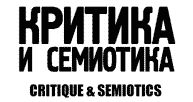THE SEMANTICS OF LITHUANIAN URBAN AND RURAL LANDSCAPES IN SOVIET CHILDREN’S CINEMA
DOI: 10.23951/2312-7899-2020-1-221-231
The article analyzes the specific reasons for the occurrence of episodes demonstrating urban and rural landscapes of Lithuania and creating a distinctive atmosphere within the frame in Soviet children films. Since Vilnius baroque was influenced by Italian architecture, filmmaking in Lithuania created the illusion of Italy for Soviet cinema. Another reason lies in the ground of otherness of the culture, inside which an image of an enemy was easier to create. But along with this extreme point there is another opposite aspect in the context of Soviet children cinematograph – visual demonstration of the absolute identity of Lithuanian urban space to Russian, or, more precisely, Soviet one. The use of Lithuanian cities landscapes was mosaic by its nature. Different meaning, than the one they performed in reality, was attributed to certain places that the audience saw in frames. The urban space of Lithuania in children’s Soviet cinema is devoid of its true meaning. The article reveals those patterns by which filmmakers deliberately refuse to show historical and everyday objects of this Baltic republic in a recognizable way.
Keywords: landscape contrast, Lithuania, urban environment, Soviet children’s cinema, visual code.
References:
Artem'eva, E. (2013) Detskie i podrostkovye obrazy v sovetskom kinematografe: kul't yunosti i strah pered nej [Children's and teenage images in Soviet cinema: the cult of youth and fear of it]. Vestnik Moskovskogo universiteta – Bulletin of Moscow University. Vol. 9: Philology. 3. pp. 154–159. (In Russian).
Epishin, A. & Hohlova, M. (2017) Stylistic features of national romanticism in the architecture of the Baltic countries. Sciences of Europe. 15–1(15). pp. 3–6. (In Russian).
Kaplunajte, I. (2011) Tower houses in Vilnius in the 14th – 15th centuries. Archeology and history of Pskov and the Pskov land. 26(56). pp. 178–182. (In Russian).
Kilimnik, E. & Orlova, ZH. (2016) Monuments of baroque and classicism in Lithuania XVIII – XIX centuries. Theory and practice of world science. 3. pp. 75–77. (In Russian).
Surdokajte, G. (2011) About the tradition of dressing sculptures in Lithuania in the 17th – 20th centuries. Burganov House. The space of culture. 4. pp. 123–143. (In Russian).
Issue: 1, 2020
Series of issue: Issue 1
Rubric: ARTICLES
Pages: 221 — 231
Downloads: 772










